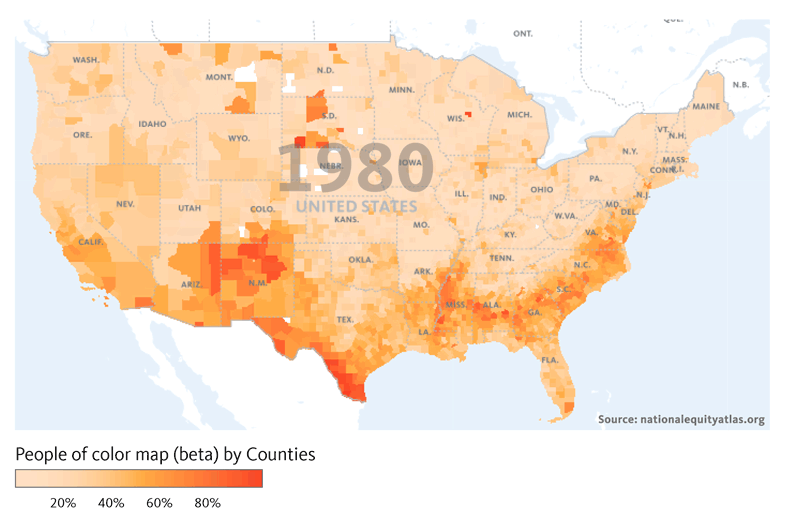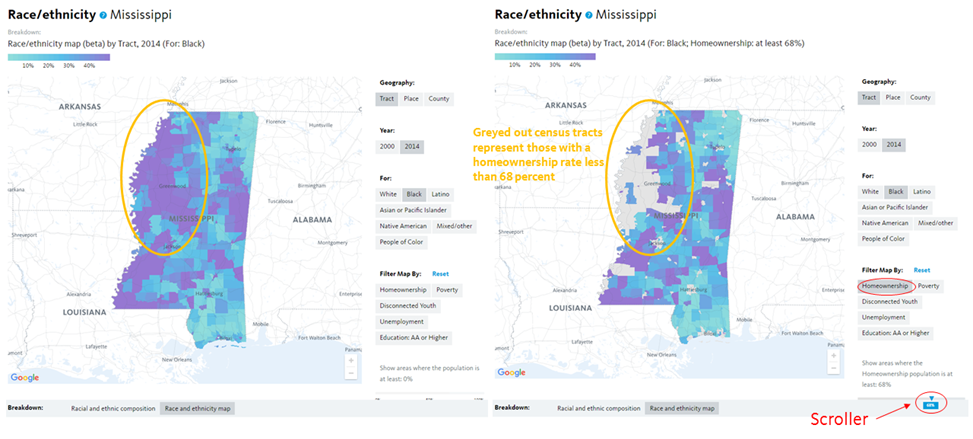Vote Yes on Measures KK and JJ for an All-In Oakland
As America’s cities face the challenges of inequality, structural racism, and displacement, local governments must take bold steps to put in place a new model of equitable growth. One imperative is to transform underinvested neighborhoods into “communities of opportunity” that provide their residents with the ingredients needed to thrive. That is why I am excited about Oakland’s Measure KK, a $600 million infrastructure bond that promises to boost opportunity and mobility for residents in long-underserved Flatland neighborhoods, and Measure JJ, a measure to extend and reform renter protections for Oakland’s residents vulnerable to displacement.
Infrastructure — streets, sidewalks, parks, water lines, and more — might not sound like the solution to Oakland’s challenges of uneven growth. But it is crucial. As Transportation Secretary Anthony Foxx likes to say, infrastructure is a “ladder to opportunity” for struggling families. Streets and transit routes make it possible to access family-supporting jobs. Parks and recreation centers provide spaces to exercise, play, and socialize. Libraries connect people to learning opportunities. And so forth. Infrastructure is the skeletal support that connects people to resources, opportunities, and each other.
Despite its critical role in bridging to opportunity, years of discriminatory land use planning and inequitable investment have saddled low-income communities of color with some of the worst infrastructure deficiencies. Oakland overall needs an estimated $2.5 billion in infrastructure investment — including a $443 million paving backlog. The neighborhoods where cash-strapped families can afford to live are more likely to have potholes, crooked sidewalk squares, and tattered playground equipment. These inequities aren’t just inconveniences: they drain already-tight family budgets. Oakland residents spend hundreds of dollars every year on flat tires and car repairs due to potholes and bad roads — and this “hidden tax” hurts low-income residents far more than wealthier drivers.
Measure KK has the potential to dramatically improve health, quality of life, and economic security for thousands of Oaklanders. With Measure KK funds, Oakland’s new Department of Transportation is prepared to deliver ten times the current levels of street repairs for 10 years. Imagine, instead of just a quarter of our streets being in good shape, in ten years 72 percent of our roads could be smooth and safe.
Moreover, the funds would go where they are most needed. While typical infrastructure bonds do not target resources, Measure KK includes historic social equity requirements that will ensure that investments are distributed fairly across Oakland, and especially in underinvested, low-income communities of color. Projects will be selected through a transparent, multilingual public process, and an oversight committee will conduct independent audits of the spending. My organization, PolicyLink, is looking forward to working with the city, under our All-In Cities initiative, to develop the best possible equity criteria and make this infrastructure bond a model for the nation in terms of equitable infrastructure funding.
In addition, Measure KK has an intentional focus on “investment without displacement.” $100 million of the proceeds will fund anti-displacement and affordable housing preservation. This is essential in a city facing a ballooning housing crisis, where rents have increased 34 percent since 2011. Measure KK will provide critical funds to protect Oaklanders all across the city from being forced to move out of affordable housing so we can keep long-term residents in our community. Measure JJ will in turn add protections to residents in their existing rental homes as their neighborhoods improve.
Building the infrastructure needed to transform neighborhoods is the right thing to do for our neighbors who are struggling to stay and succeed in a rapidly-changing city. It is also a smart economic strategy. With the right hiring, job quality, and workforce development strategies in place, this investment can provide career pathways to hundreds of Oaklanders of color who are currently locked out of good jobs. Improving infrastructure in distressed neighborhoods will also have indirect economic benefits because living in a neighborhood with quality parks, safe streets, sidewalks, and other quality infrastructure improves one’s economic chances. There is also evidence that lower-wealth residents who stay in gentrifying neighborhoods improve their financial conditions (thus also adding to the local economy), while those who move out end up living in neighborhoods with higher unemployment, lower-performing schools, and lower quality of life.
On Tuesday, Oaklanders have a chance to truly expand opportunity and take a serious step toward making Oakland an “all-in” city where everyone — especially those who’ve been waiting the longest for this moment of resurgence — has a chance to fully thrive. I encourage all Oaklanders to vote YES on Measures KK and JJ this election day.
Angela Glover Blackwell is the Chief Executive Officer of PolicyLink, a national research and action institute advancing economic and social equity by Lifting Up What Works.




